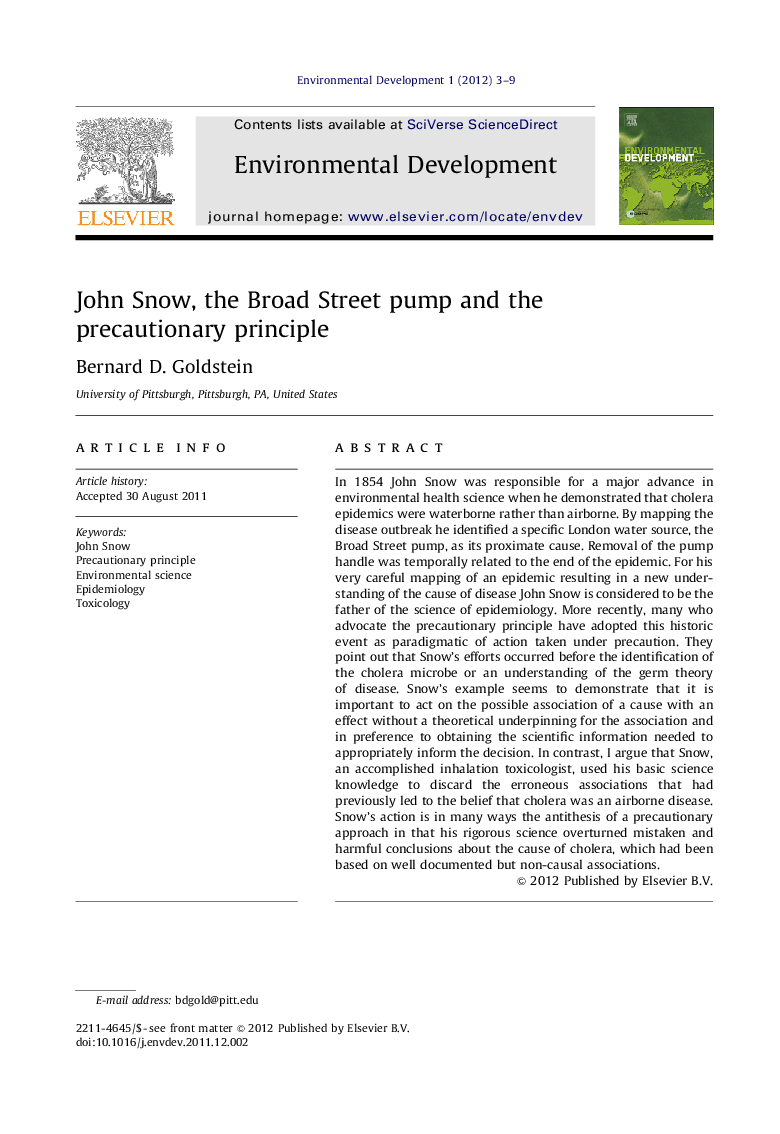| Article ID | Journal | Published Year | Pages | File Type |
|---|---|---|---|---|
| 4391603 | Environmental Development | 2012 | 7 Pages |
In 1854 John Snow was responsible for a major advance in environmental health science when he demonstrated that cholera epidemics were waterborne rather than airborne. By mapping the disease outbreak he identified a specific London water source, the Broad Street pump, as its proximate cause. Removal of the pump handle was temporally related to the end of the epidemic. For his very careful mapping of an epidemic resulting in a new understanding of the cause of disease John Snow is considered to be the father of the science of epidemiology. More recently, many who advocate the precautionary principle have adopted this historic event as paradigmatic of action taken under precaution. They point out that Snow's efforts occurred before the identification of the cholera microbe or an understanding of the germ theory of disease. Snow's example seems to demonstrate that it is important to act on the possible association of a cause with an effect without a theoretical underpinning for the association and in preference to obtaining the scientific information needed to appropriately inform the decision. In contrast, I argue that Snow, an accomplished inhalation toxicologist, used his basic science knowledge to discard the erroneous associations that had previously led to the belief that cholera was an airborne disease. Snow's action is in many ways the antithesis of a precautionary approach in that his rigorous science overturned mistaken and harmful conclusions about the cause of cholera, which had been based on well documented but non-causal associations.
